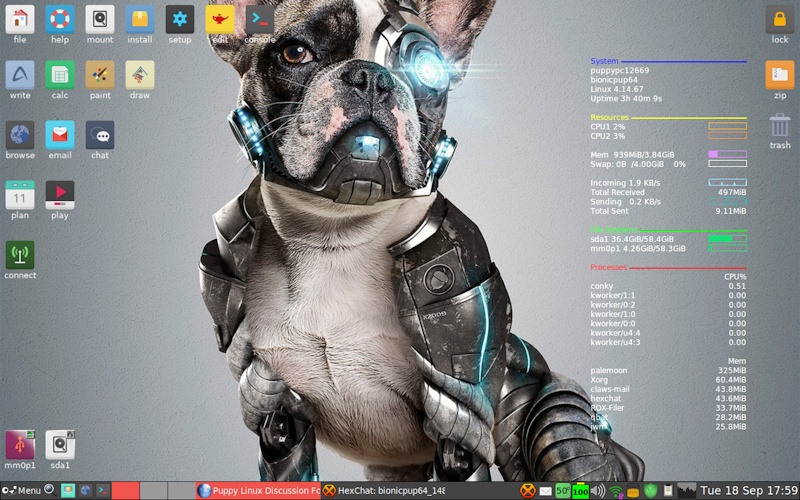Puppy Linux is a Linux distribution designed to be lightweight and easy to use for all ages and experience levels. Here are some of the main technical features and minimum system requirements of Puppy Linux:
Operating system: Puppy Linux uses the kernel of the GNU/Linux operating system, which provides a stable, secure and scalable operating system.
User Interface: Puppy Linux uses the X Window System user interface, which allows for a simple and easy-to-use graphical user experience.
File system: Puppy Linux uses the ext2, ext3, and ext4 file systems, which provide a reliable and scalable file system.
Included Programs: Puppy Linux includes a wide variety of office programs, Internet programs, games, multimedia, and utilities, allowing users to perform a wide variety of tasks.
Device discovery: Puppy Linux uses Linux device discovery, which allows users to automatically connect and disconnect devices.
Connectivity: Puppy Linux uses standard Wi-Fi and Ethernet connectivity technology, allowing users to connect to the Internet and other devices with ease.
Minimum Requirements: Puppy Linux requires a 486 or higher processor, 16 MB of RAM, a hard drive or flash memory card with at least 2 GB of available space, and a 12V power supply.
In short, Puppy Linux is a lightweight and easy to use Linux distribution that includes a wide variety of programs and features. The minimum hardware requirements are fairly low, allowing Puppy Linux to run on a wide variety of old and new hardware.
